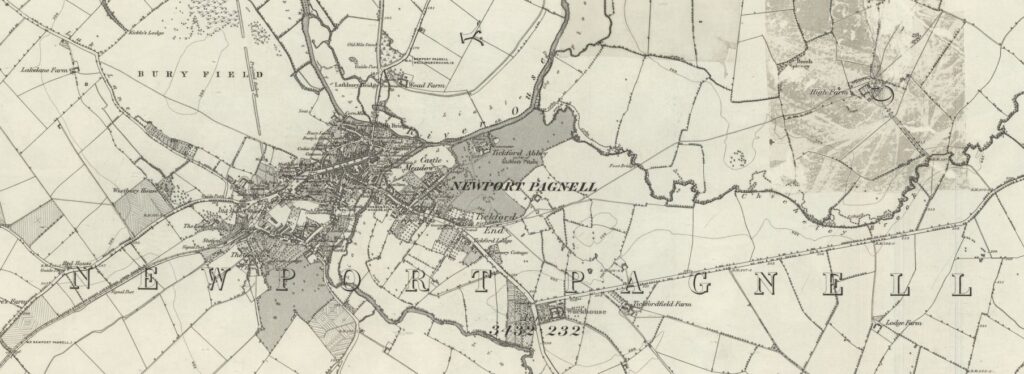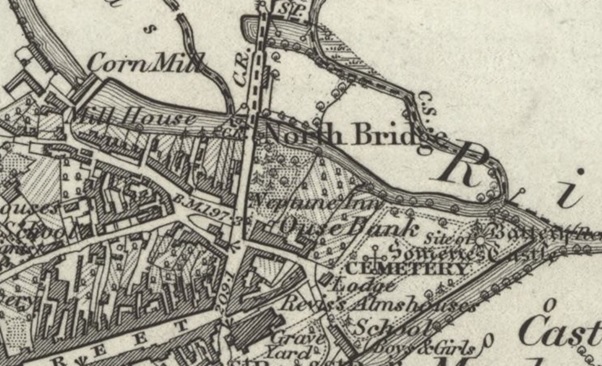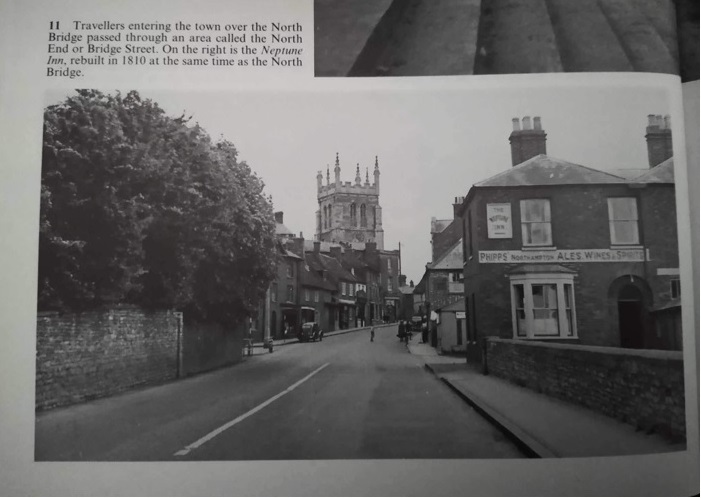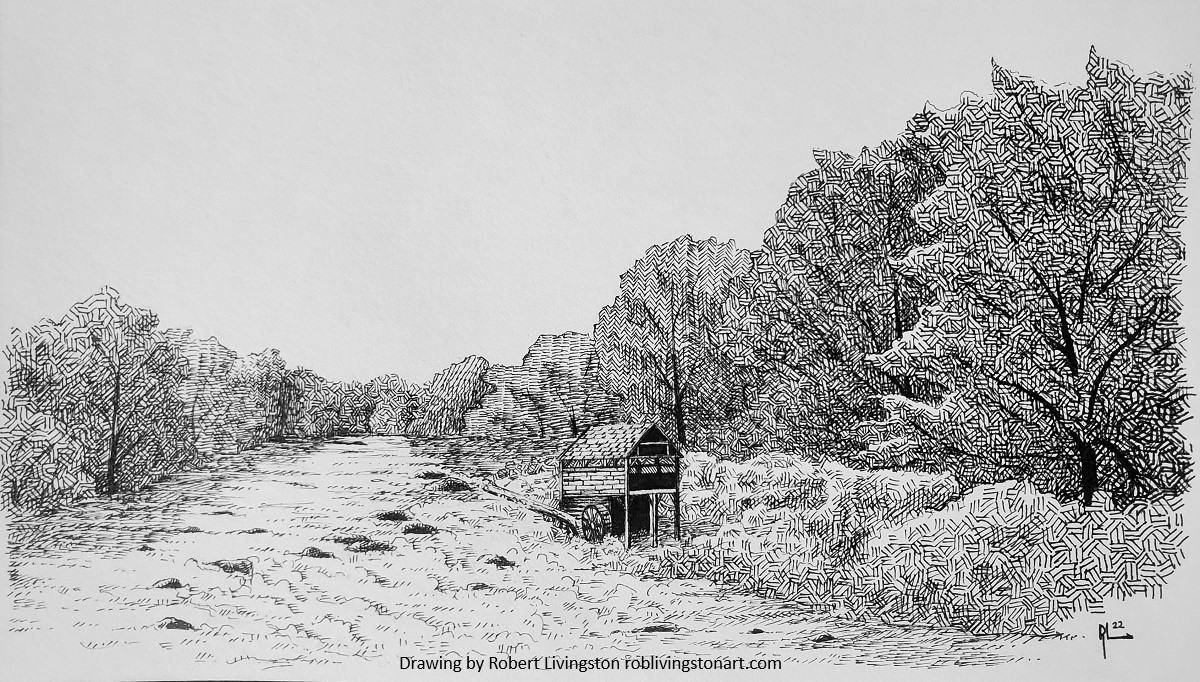Background
For a quick recap, Ralph (also written Rafe and Raph) Kendall als. Mills of Sherington and Newport Pagnell, Buckinghamshire, England, was the father of Thomas and Francis Kendall who immigrated to Reading and Woburn, Massachusetts. Thomas was born to Ralph and an unknown mother in Sherrington in 1616. Francis was born in 1620. Ralph’s family structure composed from the parish records was covered in the post Finding Francis and Thomas. His 1657 will added two more children to the family. This post covers the years between Ralph’s 1629/30 purchase of land and his probate in 1661.
Over the course of approximately fifty years and three generations, the Ralph Kendall als. Mills family had a series of four property transfers for the same land.
- Ralph Mills als Kendall (the alias surnames could be reversed), bought Newport Pagnell land in 1629/30 and build a house on it. (DB111/1)
- Ralph sold the land to his son, John, in 1654. (DB111/2)
- John deeded the land to his soon-to-be bride, the widow Martha Mitchell, in May 1666. The land was to provide for Martha should he pre-decease her, which he did in August 1666 during the Great Plague. (DB111/3)
- Martha and her third husband, George Rawbone, plus John Kendall als Mills Jr. (son of John Kendall als Mills, the second husband of Martha) and John Jr’s wife, Martha (Rawlinson), jointly sold the land to Jeremiah Smalbridge in 1681, who turned the house into an Inn named the The Ship. (DB111/6-7)
Original purchase
Ralph purchased the land from blacksmith Robert Markes on 16 February 1629/30. It was specifically a feoffment of land that was on or near the old North Bridge in Newport Pagnell[1]

Map showing Newport Pagnell in 1886. Reproduced with the permission of the National Library of Scotland [2] https://maps.nls.uk/index.html
This is a magnified view of the North Bridge from the same map. Directly under the words “North Bridge” is “Neptune Inn,” which applies to the building directly across from those words on the north-south road. One More for the Road, a book by two Newport Pagnell historians, states the inn that occupied that plot was first called The Ship and later the Neptune, its label on this map.[3]

The book has this on the history of the property:
“This property was a private house erected between 1639 and 1654 which was sold in 1681 to Jeremiah Smallbridge, a maltster of NP [deed in hand]. The title deeds (D111) locate the property on the west side of the road going north from the town, close to the river and the North Bridge; in fact one of the deeds describes the house as ‘on the bridge’.”[4]
The private house was erected during the time Ralph Kendall als. Mills (a carpenter by trade) owned the property, so presumably he was the builder or the one who authorized the construction. When the deed between Richard Marks and Ralph was drawn up, the freehold land was still under manorial jurisdiction, as the wording in the deed ‘Chief Lord or Lords’ tells us. Throughout the half century the Mills alias Kendalls held this property, it and all other holdings in Newport Pagnell town were granted, either as freehold or leasehold, by the Lord of the Manor, to whom even freeholders like Ralph owed loyalty (fealty) and usually a small token rent.See the Manorial info post for more on this topic.
Rafe Kendall als. Mills bought the property 16 February 1629/30 and held it through 1654. There is no record of when he built the house that stood on it. He may have built it shortly after purchasing the land and lived in the house when his family was young, or he may have remained in Sherrington for several years after the purchase. With a mobile job like carpentry, Ralph could also have lived in Enfield, or elsewhere in Middlesex, where he was residing when his will was written in 1657, so he might not have built the house until close to 1654. The one thing we can say is that the house was built by 1654 when he sold the land and house to his son, John.[5]
Ralph’s son, John, takes over
As with most deeds, Ralph gave no reason for his sale. It’s possible to assume this was to start divesting himself of his property. If his daughters, Susan and Mary (named in his will), were born before Thomas, Ralph may have been close to 70 in 1654.[6] If they were born after Richard, he could have been under 60, but in either case, he was no longer a young man. John was the elder of his two sons still living in England, so it was logical for the premises to go to him, especially as the deed states that John is already living there. Ralph sold the premises to his son for “love and affection” plus “a competent somme of mony.” We don’t know what that “competent” amount of money was as it was not listed in the document, but it may have been a trifle. If we think legalese is a relatively modern invention, this excerpt from Ralph’s 1654 deed proves otherwise. Here is part of the land description:
“… and allso all houses edifices buildings barnes stables out houses yards gardens Orchards backsides Commons profitts and commodityes therunto belonging And the reversion and reversions therof and all the estate right titell interest use possession Claime and demand whatsoever of him the said Ralph Kendall of into and out of the same premises and every p[ar]t thereof and all deeds Evidences writinges scripts and minniments in his custody concerning the same and all rents and advantages of Covenants referred uppon anyewise heretofore made of the same premises…”[7]
The land wasn’t big enough to have multiple houses, edifices, buildings, barns, stables, outhouses (sheds and other small buildings), yards, gardens, and orchards, so we should not assume the wording indicates John received all of that. The deed is like today’s legal documents where everything that might be on the land gets mentioned to ensure full coverage. If the family was like most of that time, they may have had a couple of small outbuildings, a garden and perhaps some animals in addition to the house that was known to be on the property.
The original house may have been rebuilt or remodeled multiple times. The 1810 version of the building, The Neptune, can be seen in an image from a Newport Pagnell history.[8]

Additional analysis
More facts can be taken from Ralph’s 1654 deed.[9] In it, he mentioned his daughter, Mary Heatley by name. She received money from John after Ralph’s death as part of the deal for the land transfer. This is evidence that Mary, listed only by her first name in Ralph’s will, and “son” Thomas (W)Heatley, also named in Ralph’s will, were husband and wife.[10] The deed also stipulated that if Thomas Kendall and Francis Kendall demanded it they were to get twelve pence each. This wording was standard at the time when a named person was living a significant distance from the location of the benefactor/seller, making it less likely they could appear to collect their funds.
One other thing we know is that Ralph and John held this land through an exceedingly difficult time in English history (see Timeline) that had both national and local tensions. Though it did not happen everywhere, disputes between town burgesses and lords of the manor due to the religious, political, and economic upheaval were one aspect of the broader disputes which ultimately led to armed conflict between King Charles I and Parliament from 1642 to 1652.[11] That period was followed by the short-lived republican Commonwealth under Oliver Cromwell, which ended with the Restoration of the monarchy in May 1660.[12] Ralph did not live to see the Restoration. He was buried in Newport Pagnell on 3 March 1658/59, likely moving back there between late 1657 and early 1658 after having lived in Middlesex where his will was written in October 1657.[13]

Burial record of Ralph Mills in Newport Pagnell[14]
Nor did Ralph Kendall als Mills’ son, John, survive for very long after the Restoration.[15] The Great Plague of 1666 decimated London, then areas nearby, then spread out across the country.[16] London and Newport Pagnell are less than fifty miles apart and by the summer of 1666, the vicar of Newport Pagnell needed multiple pages of the parish register to cover the burials for just one month, unlike earlier in that decade when two or three years of burials fit within one page.[17]
Property passes to John Kendall als Mills Jr
John wanted his son, John Jr. (as we reference him), to have the North Bridge property he received from Ralph after Martha passed. He stipulated that in his 1666 will.[18] Martha was entitled to live there until her death, but instead she and her third husband, George Rawbone, and John Jr. and his wife, also named Martha (Rawlinson), sold the land to Jeremiah Smallbridge in 1681.[19]
Although there is no way to be certain of who lived in the North Bridge property or if there were periods it was leased to non-family members, that does not stop us from imagining the Mills als Kendall family living there, hopefully in peaceful domestic life, and enjoying the home build on or near the North Bridge in Newport Pagnell.
[1] Newport Pagnell deeds (Buckinghamshire, England), deed number DB111/1 (1629), Robert Markes to Ralph Kendall als. Mills, photographed and transcribed by Celia Renshaw July 2023; Buckinghamshire Record Office, Aylesbury.
[2] Buckinghamshire Sheet X (Southampton, UK: Ordinance Survey Office, 1886) cropped digital image, National Library of Scotland ( https://maps.nls.uk/view/102340100#zoom=5&lat=1224&lon=7924&layers=BT : accessed 16 August 2023).
[3] Dennis Maynard and Donald Hurst, One More for the Road (Newport Pagnell, Buckinghamshire, England: Newport Pagnell Historical Society, 1999), 99.
[4] Maynard and Hurst, One More for the Road, 99.
[5] Newport Pagnell deeds (Buckinghamshire, England), deed number DB111/2 (1654), Ralph Kendall als. Mills to John Kendall als Mills, photographed and transcribed by Celia Renshaw July 2023; Buckinghamshire Record Office, Aylesbury.
[6] “Wills” database, Buckinghamshire Council Archives (https://shop.buckscc.gov.uk : accessed 25 April 2023), pdf of Rafe Kendall als. Miles, 1661.
[7] Newport Pagnell deeds (Buckinghamshire, England), deed number DB111/2 (1654), Ralph Kendall als. Mills to John Kendall als Mills.
[8] Dennis Maynard and Julian Hunt, Newport Pagnell, A Pictoral History (Gildford, Surrey, England: Phillimore & CCo, LTD, 1995), image 11.
[9] Newport Pagnell deeds (Buckinghamshire, England), deed number DB111/2 (1654), Ralph Kendall als. Mills to John Kendall als Mills.
[10] “Wills” database, Buckinghamshire Council Archives, pdf of Rafe Kendall als. Miles, 1661.
[11] Angela Smith & Neil Bertram, Tracing Your Ancestors Using the UK Historical Timeline (Padstow, Cornwall, UK: TJ Books, LTD (Pen & Sword Books, 2021), 39.
[12] Smith & Bertram, Tracing Your Ancestors, 44.
[13] England, Buckinghamshire, Newport Pagnell, Parish Register for Newport Pagnell, 1558-1718, bur. Raphe Kendall als. Miles, 1658/9, FHL microfilm 1042392, items 14-16; digitized images, Family Search (www.familysearch.org : accessed 13 April 2023).
“Wills” database, Buckinghamshire Council Archives (https://shop.buckscc.gov.uk : accessed 25 April 2023), pdf of Rafe Kendall als. Miles, 1661.
[14] England, Buckinghamshire, Newport Pagnell, Parish Register for Newport Pagnell, 1558-1718, bur. Raphe Kendall als. Miles, 1658/9, FHL microfilm 1042392, items 14-16; digitized images, Family Search (www.familysearch.org : accessed 13 April 2023).
[15] England, Buckinghamshire, Newport Pagnell, Parish Register for Newport Pagnell, 1558-1718, bur. John Ken[dall] (lost to tight binding), burials 1666, FHL microfilm 1042392, items 14-16; digitized images, Family Search (www.familysearch.org : accessed 13 April 2023).
[16] Wikipedia (www.wikipedia.org), “Great Plague of London,” rev. 02:37, 16 Aug 2023.
[17] England, Buckinghamshire, Newport Pagnell, Parish Register for Newport Pagnell, 1666, FHL microfilm 1042392, items 14-16; digitized images, Family Search (www.familysearch.org : accessed 13 April 2023).
[18] “England & Wales, Prerogative Court of Canterbury Wills, 1384-1858,” database with images, Ancestry (www.ancestry.com: accessed 15 March 2023), John Kendall, 1666.
Also note: The suffix, Jr., does not appear in documents but has been added to distinguish the two generations of John Kendall als Mills.
[19] Newport Pagnell, Buckinghamshire, original deed of lease & release DB 1111/6 & 7, George & Martha Rawbone plus John & Martha Kendall als. Mills to Jeremiah Smallridge (1681); Aylesbury Buckinghamshire Record Office.
